Board: 2019-2020 Amplid Millisurf Splitboard, 161 cm
Available Sizes: 157, 161 cm
Stated Weight: 2700 grams
Blister’s Measured Weight (161 cm): 2660 grams
Stated Dimensions (161cm): 313-264-297 mm
Stated Sidecut Radius (161 cm) : 8.4 meters
Rocker Profile: Directional Cruise Camber (traditional camber underfoot with rockered nose)
Stated Flex Rating: 7/10
Core Construction: Paulownia/Balsa/Birch + Carbon Fiber Laminate
Base: Sintered 7HD
Boots: K2 Aspect, K2 Ender, Fitwell Backcountry
Bindings: Karakoram Prime Carbon, Spark R&D Surge, Spark R&D Surge Pro
Test Locations: Turnagain Pass, Chugach Mountains, Talkeetna Mountains, Delong Mountains, & Brooks Range, AK
Days Tested: 47

Intro
The Amplid Milligram has been one of our favorite splitboards for years, and this past season, Amplid introduced a more powder-oriented spinoff of the Milligram. The result is the Millisurf, which utilizes the same lightweight construction as the Milligram, but is designed to perform better in powder. It is essentially the shape of the Amplid Surfari solid snowboard, merged with the construction of the Milligram.
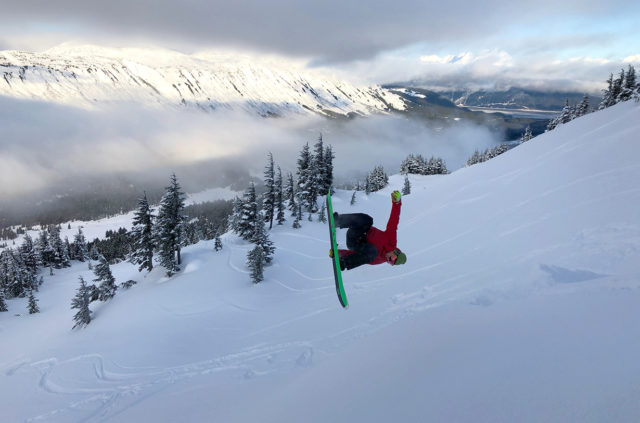
That’s a really interesting combination, and the result is an extremely lightweight, responsive powder board that is a ton of fun to tour on. So let’s dive into why the Millisurf received a “Best Of” award in our 18/19 Winter Buyer’s Guide.
Weight and Construction
Mirroring the Amplid Milligram in construction, the Millisurf is amazingly light at 2660 grams for the 161 cm version and features one of the more advanced / impressive builds in the splitboard industry. The Millisurf’s incredibly light and responsive ride is attributed to several components.
Beginning with the core, Amplid utilizes Paulownia and Balsa wood in low-impact zones due to their lightweight properties, with stronger Birch to reinforce and protect higher-stress zones. The lightweight, yet tough “Full Carbon Jacket” laminate adds a very responsive and snappy feel to the board.
I think this feature really drew me in when first riding the Milligram in 2015 because it was one of the first splitboards that flexed and popped like a solid snowboard, while retaining a very low weight.
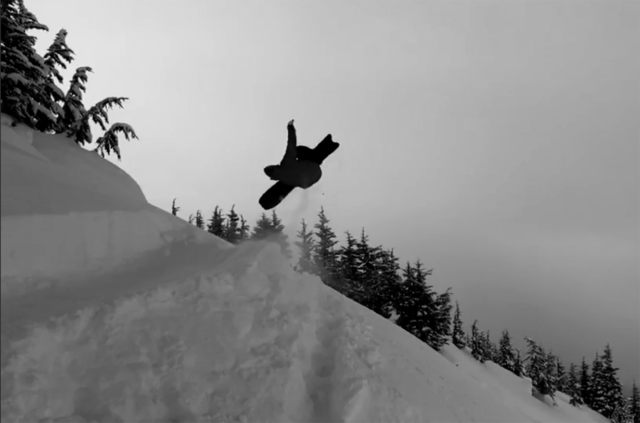
As with the Milligram, the Millisurf contains pre-cured additional laminates under the high-wear zones to protect from splitboard hardware. New for 18/19, Amplid increased the size of these reinforced areas to protect the board from touring hardware. I have found this to be extremely beneficial after a few seasons of use on the Milligram.
Amplid also updated the 18/19 Millisurf by changing the top sheet from “Tanga,” to their new “Nanofilm,” which is claimed to be approximately 50% lighter, and we have found it to be less likely to chip, particularly from edge rub while touring. The Millisurf’s sintered “7HD” base feels very fast compared to other splits, although the Millisurf’s speed could also be attributed to its shape.
When it comes to overall weight, the Millisurf is significantly lighter than most other splits on the market. The Millisurf is roughly 1 kg lighter than the Never Summer Swift, Venture Euphoria, and Rossignol XV splitboards, and just under a kilogram lighter than the K2 Split Bean and G3 Scapegoat+.
Shape
After riding a handful of powder-oriented shapes, such as the K2 Split Bean, Venture Euphoria, G3 Scapegoat+, Never Summer Swift, Rossignol Sushi, and Jones Hovercraft, I have gained an appreciation for the longer shapes with subtle swallowtails, due to their versatility. While sometimes not quite as surfy as their <154 cm, stubby, compact brothers (e.g., Split Bean, Sushi, Euphoria), the modern 154-160+ cm powder-oriented shapes seem to be much faster, far more stable, and overall more capable in a wider range of terrain, conditions, and riding styles.
Of the boards mentioned, the shape of the Millisurf has a close resemblance to the Never Summer Swift, one of the faster-feeling powder boards we have tested. The nose of the Millisurf is far more blunted than that of the Swift, and 6 mm narrower, whereas the waist and tail of the two boards are within 2 mm of each other.
Dimensionally speaking, the G3 Scapegoat+ is extremely close to the Millisurf, but the boards’ tip and tail shapes differ quite a bit, resulting in a much different ride. The only issue I have had with the Millisurf’s shape is edge hold on straight-up ice. While most powder-specific boards are not designed to excel on ice, the Millisurf responds very similarly to the Scapegoat+ in that it has a tendency to wash out when trying to edge hard on bulletproof ice, typical of spring mornings during the melt / freeze cycles (more on this later).
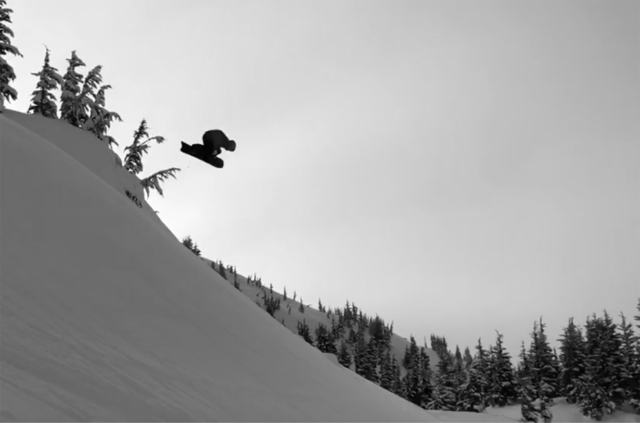
The shape of the nose on the Milligram provides ample float and impressive agility, which I think is in part due to its 3D convex shape. This design is similar in concept to the Bataleon Camel Toe, Jones Project X, or Morrow Spoon, and effectively acts as a boat hull, helping to displace snow to the side and aid in keeping the board tracking through powder.
The sidecut and taper of the 18/19 Millisurf have been adjusted from the previous generation. Amplid increased the width near the back zone of the board, reducing the taper to 16 mm and subsequently tightening the sidecut radius to 8.4 m. The result is a board that’s slightly wider for additional floatation and to accommodate larger boot sizes. The sidecut radius has been adjusted to be more reactive and increase tail hold while edging. The rather modest swallowtail on the Millisurf does an effective job of balancing the board in powder, keeping the buoyant nose up, and aiding in tight slashes.
If you’re particularly interested in the shape of the Millisurf (as we are), it is worth noting that Amplid makes a solid version of the Millisurf, called the Surfari.
Camber Profile
The Millisurf features Amplids Cruise Camber, which is essentially camber underfoot with a rockered nose. The Millisurf’s camber does differ from the Milligram in that Amplid scaled down the amount of camber to increase performance in powder. I’ve come to really like the Millisurf’s rocker profile in both powder and firmer conditions.
The rockered nose of the Millisurf feels well matched for the flex and 3D nose of the board, allowing for effortless floatation in powder and a sufficiently solid platform to blast through crud and tracked snow. As with the nose, the Millisurf’s camber underfoot complements the flex, allowing excellent edging in powder and firmer snow, which translates to powerful carves and snappy ollies.
Flex Pattern
Amplid rates the Millisurf’s flex as a 7 out of 10, which feels pretty spot on. It does feel slightly softer than the Never Summer Swift, and noticeably softer than the Venture Euphoria, K2 Split Bean, and Jones Carbon Solution.
While I typically prefer stiffer boards, the Millisurf’s flex, in combination with the shape. makes for a very lively ride, efficiently transferring rider input to strong carves, pops, and slashes in softer conditions, similar to that of the Milligram.
The Millisurf does an adequate job of blasting through tracked, wet pow and digging in the edge on firmer, chalky conditions. For a more all-round / all-mountain split to use on variable snow and ice, a board with a stiffer flex and / or heavier weight would be more beneficial (e.g., Jones Carbon Solution, Rossignol XV, or Venture Carbon Paragon). The stiffer flex, particularly torsional flex, helps to more efficiently transfer the rider’s weight from the binding to the edge.
Skinning
The skinning attributes of a splitboard play an important role in selecting a board for the day. Since the bulk of the day is spent going uphill, the touring properties can really affect the productivity of the outing. Specifically, three elements stand out to me: (1) the board’s weight, (2) edging / ski-ability, and (3) trail-breaking properties. All of these vary with a board’s touring-mount location, flex, and shape.
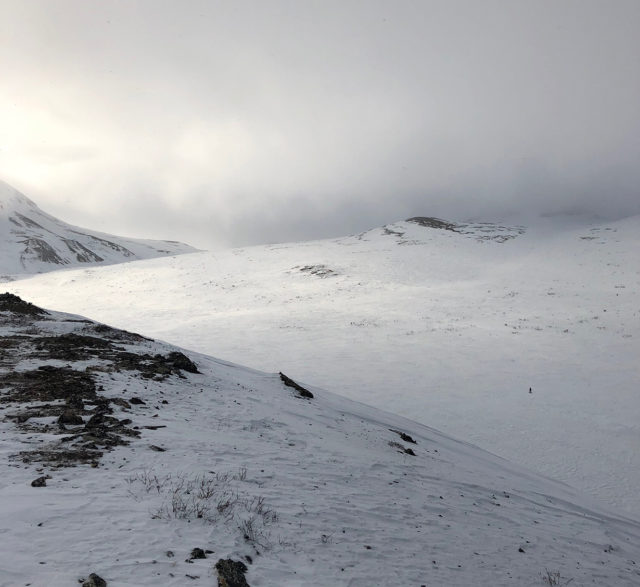
With these elements in mind, the Amplid Millisurf is one of my personal favorite splitboards to tour on. Being on the lighter end of current splitboards (perhaps only rivaled by the Milligram), touring on the Millisurf is easy and efficient. It leaves me less fatigued at the top of the up track, resulting in more laps and faster ascents. From purely a weight perspective, the Millisurf is a joy at roughly half a kilogram lighter per ski than most boards of similar shapes.
The Milligram does quite well when it comes to edging while touring up and during short ski descents with the board split. While a slightly stiffer board, such as the Venture Paragon Carbon or Jones Carbon Solution, may bite a bit better on firm and icy conditions, I have not been disappointed by the Millisurf, even on icy skin tracks.
The Millisurf’s touring mounts give the board a nice, balanced feel with a well-designed tip-to-tail ratio. Compared to more exaggerated powder shapes with larger tips and smaller tails (e.g., K2 Split Bean and Venture Euphoria), the Milligram feels much more balanced given its more centralized touring mount location. The Split Bean and Euphoria often feel clumsy and poorly balanced while skiing, kick-kick turning, and touring due to their wide, stubby shapes and set-back touring mount locations, giving the boards very small tails and massive noses.
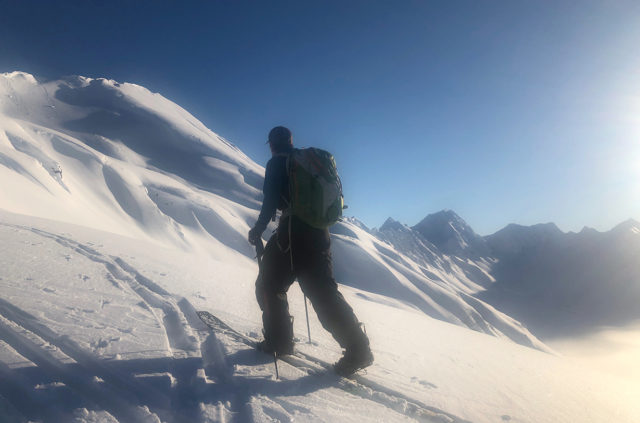
When it comes to powder-oriented, swallow-tailed boards, the Millisurf appears to be one of the better touring options — lightweight, well balanced, and a nice “ski” shape.
As with the Never Summer Swift, the Millisurf’s tail shape presents a bit of a challenge when matching it with skin tail clips. I have found that the Kohla Tirol, Millisurf-specific skins work the best with no complications to speak of. The Kohla Tirol skins even come with a printed guide on the underside of the skin to help trim the tail for the Millisurf. I did have one of the Kohla Tirol tail clips rip out after a few days of use, and resorted to the G3 Universal+ and Glide+ skins. I found that, by switching the tail clips (from right to left, and vice versa), I could get a pretty secure fit with the G3 skins. I was unable to get the standard Voile Tractor skins / Spark tail clips to work well, due to shape of the Millisurf’s tail.
Powder
While each powder-oriented board rides a bit differently and caters to a unique riding style and purpose, the Millisurf is one of, if not the best performing powder splitboards we have tried.
As I touched on in the Shape section, the length of the Millisurf makes it fast, lively, and stable in powder, especially compared to the shorter, stubbier powder shapes out there. The Millisurf’s 3D nose and general nose shape offers excellent floatation, basically feeling unsinkable in the deepest powder. In addition, by having the edge of the nose elevated, the Millsurf’s nose feels especially surfy, more so than the Never Summer Swift.
The Millisurf’s nose, coupled with its 16 mm taper and more modern, stubby swallowtail makes the Millisurf feel very maneuverable in tighter terrain and trees, quite similar to the Swift or Euphoria.
For drops, natural features, and open terrain, the tail of the Millisurf seems to give the board a similar sense of stability and comfort like the Swift (which is also a longer, less stubby pow board). This is most noticeable on the Millisurf when landing slightly backseat or knocked off balance, whereas shorter boards like the Sushi, Split Bean, and Euphoria do not offer the same stability and support.
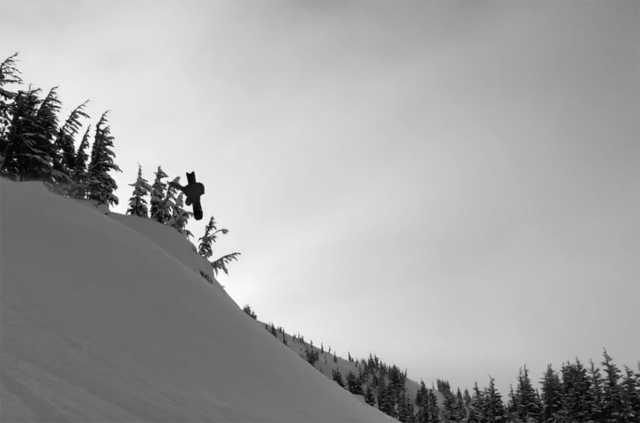
The Millisurf’s softer flex and camber underfoot make it feely poppy in powder, encouraging a playful riding style when hitting drops and natural features, while the rather long, modest swallow tail is still quite supportive on landings.
Similar to the Milligram, the construction and flex of the Millisurf make it feel very responsive while carving and slashing in powder. I found that a stiffer binding, such as the Karakoram Prime Carbon, helps the board feel more lively, almost causing the board to porpoise above the snow between turns, allowing for smooth and really fun carving.
Firm and Variable Snow
While the Millisurf is designed primarily for powder, I was able to spend 3 weeks riding highly variable snow in the western Brooks Range of northern Alaska, where wind board and sastrugi dominate much of the landscape between snowfalls. While riding down a hard face covered in 1-3’ high sastrugi is never fun, the Millisurf did a pretty decent job of maintaining edge hold.
While the Millisurf’s shape does not lend itself to riding well on rock-hard ice, if the snow is at all edgeable or chalky, the Millisurf holds an edge quite well, feeling secure and powerful. While a more all-mountain-oriented board such as the Milligram, Solution, or XV is designed to better handle these conditions, the Millisurf did a sufficient job and performed very similar to the Swift and Euphoria and significantly better than the G3 Scapegoat+ when it came to firm and variable snow.
Corn / Spring Conditions
While the Brooks Range last spring brought highly variable conditions, it also provided some great corn and hot pow. Similar to its performance in maritime wet or dry powder, the Millisurf had no problems carving and slashing through soft spring conditions. Its nose performed very similar in corn and hot pow as colder pow, offering ample float and the 3D nose seemed to aid in blasting through soft corn snow.
Edging was easy and the Millisurf did not have any problems laying hard, deep carves on soft snow nor any issues slashing soft windlips. The only complaint I have with the Millisurf in spring snow is that the Millisurf feels a tad bit too soft for riding hard in these conditions. It seems like stiffer, heavier boards, such as the K2 Split Bean or Venture Euphoria do a better job of blasting through moderately set up, wet corn.
Who’s It For?
The Millisurf is one of the best powder-oriented splitboards we have tested for a variety of powder-filled environments. Its impressive construction and design make this board stand out among other boards in this class — both on the up, and on the down. For intermediate to expert riders seeking a very surf-inspired splitboard, I would not hesitate to recommend the Millisurf.
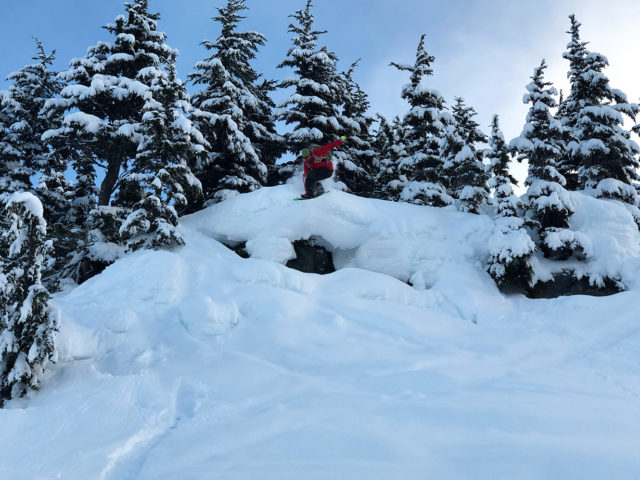
There are surfier boards out, there such as the Sushi, Split Bean and Euphoria. But if you’re interested in a versatile, high-performing, powder-oriented shape that feels rather surfy, yet offers stability in the tail, the Millisurf is hard to beat. Its lightweight construction also makes touring considerably easier, and makes the Millisurf very enticing for anyone looking to shave grams (or kilograms) off their setup.
Bottom Line
The Amplid Millisurf is a high-tech, well-designed, lightweight, powder-carving tool. While it thrives in bottomless powder, this board is extremely capable in soft snow and in a variety of terrain — agile in tight trees, yet stable for more committing lines and higher speeds. If you’re intrigued by the construction and lightweight aspect of the Millisurf, but typically ride a variety of conditions (including ice and variable snow), the Milligram is a great alternative.
But the Millisurf makes for an extremely fun ride in powder, with its blunted, 3D nose and powder specific shape keeping the board afloat and remarkably fast, even in the deepest of pow. Although it’s not the cheapest option at $1200, the Millisurf is our top pick for a powder splitboard that tours just as well as it rides.

How would you compare to the Jones Hovercraft?